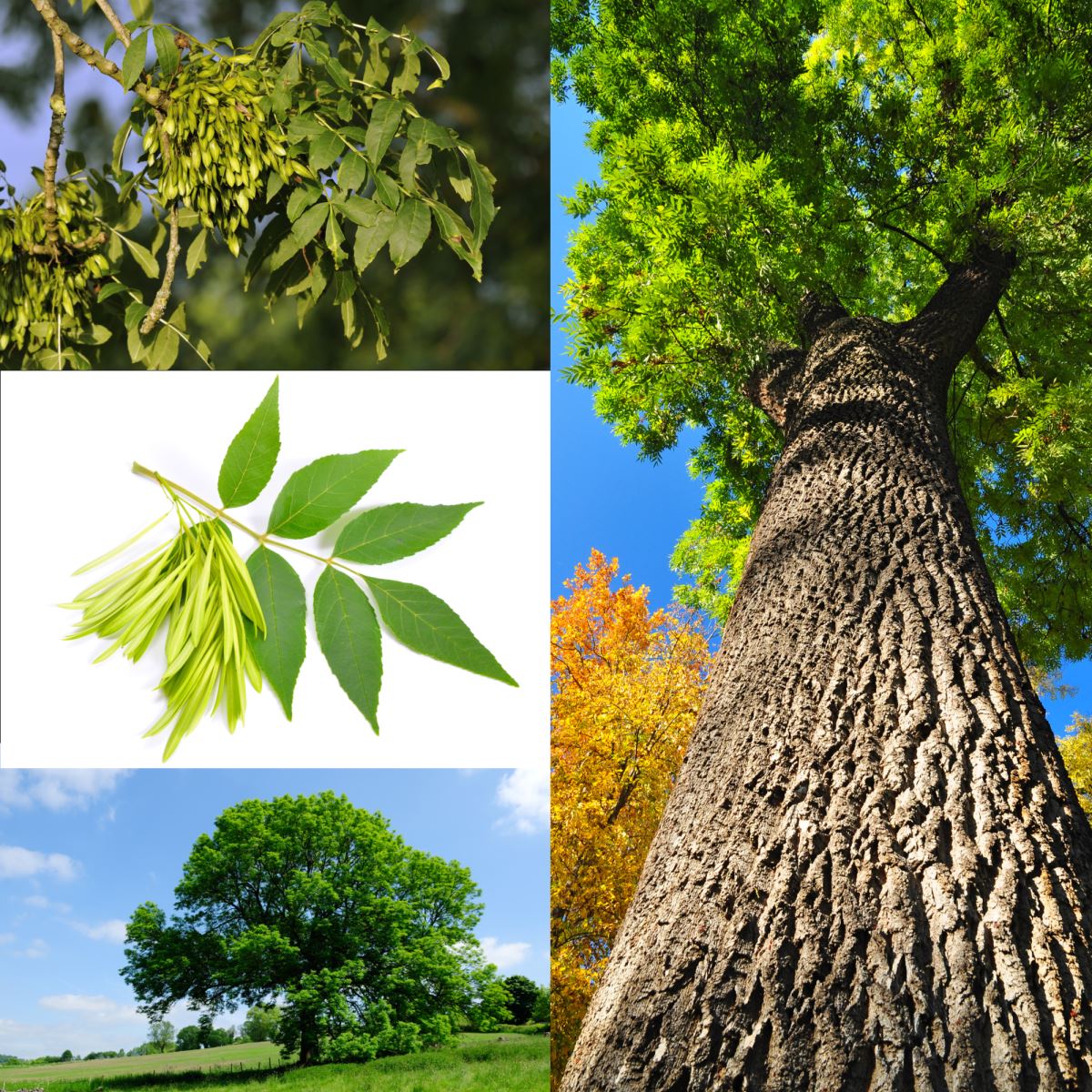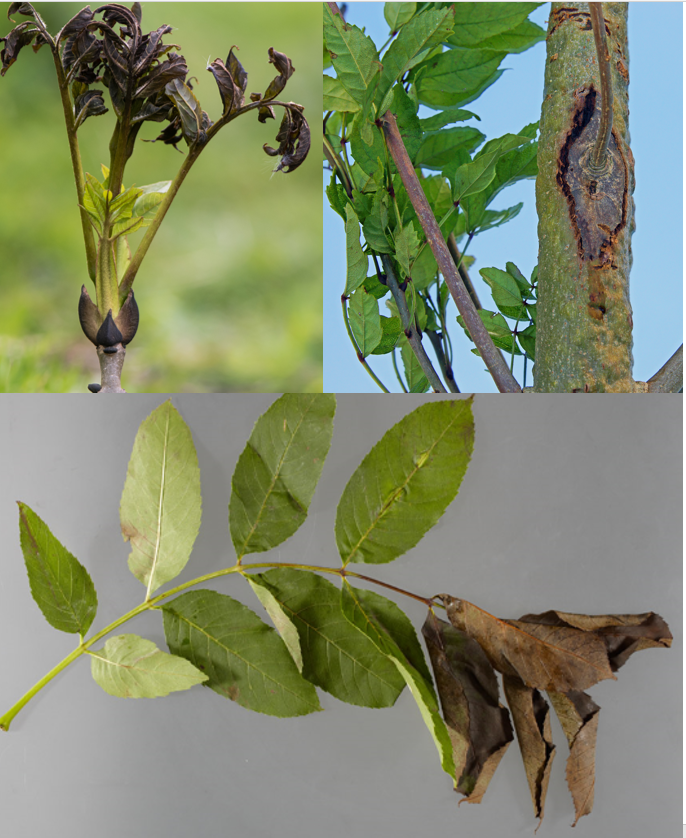Many of the landscapes we visit and value as climbers and walkers are dominated by ash woodland, but a fungal disease – ash dieback – is expected to decimate the population of these trees across Britain. Not only might the landscape change dramatically, but also the rapid decay in affected trees can make them dangerous to anyone walking underneath, not to mention climbers who might have up until now relied on ash trees for runners or belays. This could be a new type of objective danger to many of us, but what do we need to know and how can you assess the risk?
What is it?
Ash dieback is a fungal disease originating in Asia which has spread through Europe and is now thought to be present across most, if not all of the UK’s ash population. The National Trust, who own and manage large areas of ash woodland in England and Wales, estimate that 75-95% of native ash trees will be lost to ash dieback in the next 15 years, based on experience from our European neighbours.
There is no cure for ash dieback, although it is likely that a small proportion of trees will be resistant to the disease. Once a diseased ash tree is in decline or dead, it decays quickly and can soon become dangerous depending on where it is located. It’s important to leave trees that don’t pose a hazard, giving them the opportunity to demonstrate resistance to the disease and promote natural regeneration of a new disease resistant ash population. The retention of some dead wood also provides a good habitat for a host of organisms including bats and so can help improve the biodiversity of a woodland.
How to ID an ash tree
Ash trees can grow up to 35m tall and are most easily identified when in leaf. During spring, summer and early autumn they have compound leaves with 3-6 opposite pairs of light green, oval pointed leaflets and one terminal leaflet at the end. Bark varies from pale brown to grey and during winter black velvety leaf buds in opposite pairs can be seen on smooth twigs. They are present across most of England and Wales (although some areas have more than others), and are the third most common tree in Britain.

Clockwise from top: ash leaves and keys (seeds); the trunk and canopy of an old ash tree from below; a single ash tree (ash trees can be found alone as well as in woodland); a closer look at ash leaves and keys. (All photos credit: Shutterstock)
For more information on how to ID ash trees, the Woodland Trust have some excellent advice on their website.
Why is it a problem for climbers and walkers?
Ash dieback causes rapid decay in affected trees and they may become weak very quickly, whilst appearing at first glance to be fine. For climbers using ash trees as belays, abseil points or runners it is really important to understand this so you can avoid committing to use a tree anchor which may have been used for years but is now unreliable. Even if the base of the tree appears sound, affected ash trees are likely to have very brittle wood in the canopy which can easily shake loose and fall. For walkers and climbers, there are safety implications for diseased trees along paths and access routes. In many areas landowners will be felling dangerous trees along roads, rights of way and other paths and this could result in temporary access restrictions for safety reasons.
Which areas are likely to be most affected?
As we’ve already said, ash trees are the third most common tree species in Britain, making up 12% of our tree population so they can be found almost anywhere.
However, the areas we‘re interested in as climbers and walkers which are most dominated by ash woodland tend to be limestone areas such as the White Peak, Mendips, Wye Valley, Yorkshire Dales, northern Lancashire, parts of the Lake District, North Wales limestone, southern Snowdonia and the South Wales Valleys.
How to identify trees with dieback
Ash dieback is easiest to identify when the tree is in leaf. Although there are numerous acute symptoms which present in very young ash trees, the symptoms in older trees are much more generic. For this reason, the advice from the Tree Council is to look for general decline in the density of leaf cover. Once an ash tree is showing 50% loss of leaf cover it will not recover and the possible extent of decay makes it a potential hazard. Some trees will present with large bark lesions near the base. These are particularly unstable and can fail, even with a largely healthy canopy still showing.
For more information on ash dieback and how to identify affected trees, the Tree Council have a comprehensive guide for tree owners, which is equally useful to recreational users.

Signs of ash dieback - clockwise from top left: newly emerged dying leaves; an example of a diamond shaped lesion caused by ash dieback (both photos credit: Shutterstock); ash leaves affected by ash dieback (credit: The Food and Environment Research Agency, Crown Copyright.)
What can you do about it?
Firstly, don’t take a chainsaw to the crag yourself and start felling trees! Ash trees are renowned for their unpredictability even when healthy and pose a significant risk to experienced chainsaw operators when affected by ash dieback. Not to mention that felling trees without landowner permission is definitely not a good idea and likely to result in access issues.
However, there is plenty you can do. Firstly, get familiar with the signs of ash dieback so you can identify affected trees and avoid using them as anchors or standing or parking underneath them. For any trees displaying signs of ash dieback used as anchors, particularly where there is no reliable backup, assume they are untrustworthy and find an alternative. In scenarios such as using trees as abseil anchors, the outcome of a decayed tree could be terminal, so don’t take any chances. If nothing else, learn how to ID an ash tree and if you’re not confident of your ability to recognise ash dieback, simply avoid relying on ash trees as climbing anchors or spending long periods underneath ash trees.
Beyond personal education, if you notice trees which are used as anchors showing signs of ash dieback on a crag, report them to the local BMC Access Rep so that warnings can be posted on RAD and planning for alternative anchors can take place if needed.
The future
Areas dominated by ash woodland could look very different over the next 15 years as the effects of ash dieback really take hold. One impact of this on the climbing community is that we may need to consider alternatives for anchors where ash trees have until now provided the only available option. Clearly this will need to be considered by local, active climbers who know the crags in question, on a case by case basis. In many case alternative options for descent may be available – walking off or using alternative abseil anchors for example. But there may be a need in some situations to place bolt anchors if no other alternatives exist.
DOWNLOAD: the BMC RAD app
Get all the info on crags with the RAD (Regional Access Database) app from the BMC! Available now for Android and iOS, it's free and comes with a host of new features like navigation and parking, weather and tidal updates, and of course information on restrictions or notes on access advice. Get it here now!
RAD is community led and your comments help keep it up to date so don’t be afraid to add any relevant information after a crag visit which might be useful for other visitors – anything from conditions on the crag, favourite routes or reports of rockfall/other recent changes to the crag are all useful for other climbers visiting.
« Back